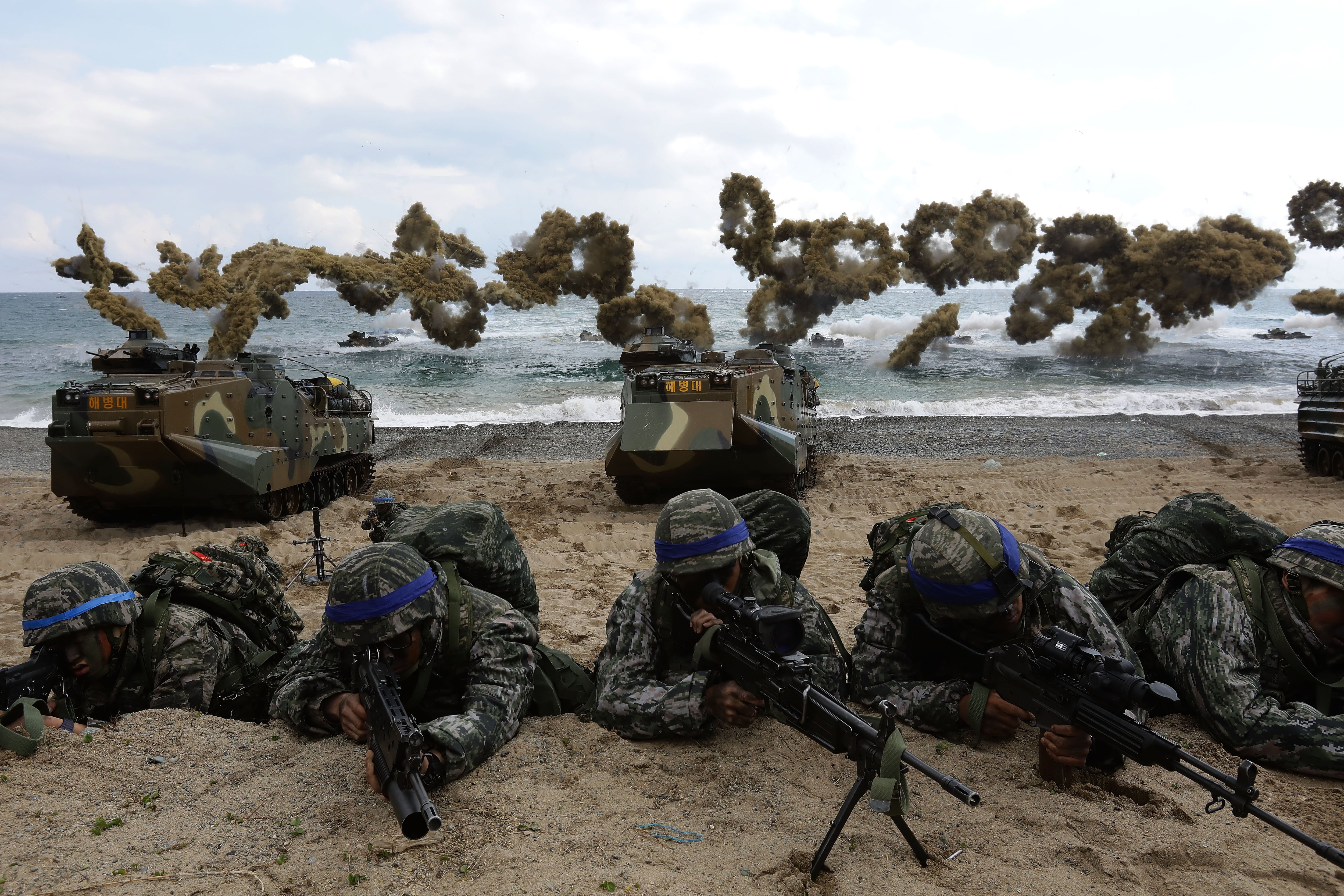SEOUL — South Korea plans to spend more money on boosting its missile defense shield in response to North Korea’s evolving missile capability, the Ministry of National Defense announced Aug. 15.
Under the midterm defense budget plan, the South Korean military will spend about $240 billion, representing an annual defense budget increase of 7 percent over the 2020-2024 period. Out of this, some $85 billion would be invested on arms improvements, marking a 10.3 percent year-on-year increase over the next five years.
To enhance its low-tier missile network, called the Korea Air and Missile Defense system, or KAMD, South Korea plans to acquire two more ground-based anti-missile early warning radars and three more Aegis-equipped destroyers.
“The missile defense system is to have a larger defense area with increased intercept capabilities,” the ministry said in a statement. “By upgrading the Patriot and Cheolmae II missile systems, along with the ongoing development of L-SAM, we will establish a multi-layered defense capability enough to intercept new types of North Korean short-range ballistic missiles more effectively.”
L-SAM refers to a locally made long-range surface-to-air missile current under development, while the Cheolmae II, also known as KM-SAM, is a domestically manufactured medium-range surface-to-air missile capable of engaging an incoming target at an altitude as high as 20 kilometers.
South Korea has deployed several batteries of upgraded Patriot Advanced Capability-2, or PAC-2, systems bought from Germany. For upgrades, the country gave an order of new PAC-3 Missile Segment Enhancement, or MSE, missiles under a U.S. Foreign Military Sales contract valued at about $53 million.
RELATED

“The PAC-3 MSE uses a two-pulse solid rocket motor that increases altitude and range to defend against evolving threats, so that the newer missile interceptors are expected to be useful in thwarting the North’s new type of missile threats,” a ministry source said, speaking on condition of anonymity.
“The ballistic missile operational center is also to be upgraded to help detect enemy targets eight times more than now and increase interoperability with other radars and interceptors,” he added.
For the past month, North Korea launched new types of short-range ballistic missiles and multiple launch rocket systems in defiance of the U.S.-South Korean training exercises that began Aug. 11.
One of the missiles has been identified as KN-23, modeled on Russia’s Iskander, capable of flying horizontally and then diving to a target to avoid interception. On Aug. 10, North Korea also test-fired another type of ground-to-ground ballistic missile on par with the Army Tactical Missile System, or ATACMS, deployed in the South, according to analysts.
The South’s midterm defense improvement plans also involve strengthening independent capabilities of reconnaissance and surveillance. To that end, the ministry plans to acquire five spy satellites by 2023 and deploy mid- and high-altitude unmanned reconnaissance planes.
The military also plans to locally build a ship armed with precision-guided missiles, a large-deck landing ship that can carry short takeoff-and-landing fighter jets, and 3,000-ton heavy attack submarines.
Among other force improvement plans are the acquisition of electromagnetic pulse bombs, SM-3 ship-launched surface-to-air missiles, more airlifters and upgrades of F-15K sensors, including an anti-jamming system.
Email: jeff@defensenews.com
Jeff Jeong was the South Korea correspondent for Defense News.








